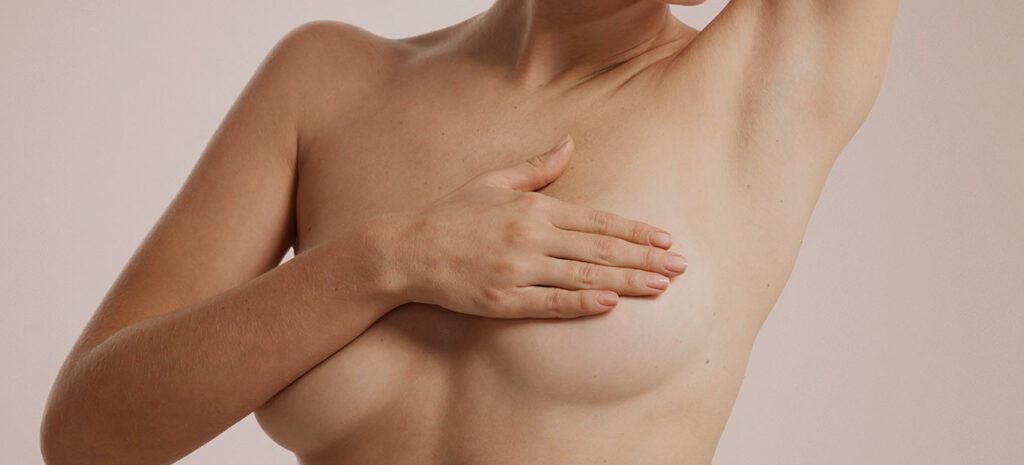Women’s nipples, as most of us know, serve the natural evolutionary purpose of feeding offspring during infancy. However, according to experts, that may not be their only function, and there’s a lot more to the milk-dispensing protuberances than many people realize.
Nipples tend to look alike and have similar features. But, like individuals, they are unique, with all kinds of surprising quirks and oddities. Though you’ve had them all your life and may even have used them to nurse your children, how much do you actually know about your nips?
Here are 13 facts that you may not know about women’s nipples…
There Are 8 Nipple Types

Women’s nipples differ. They can be flat, blending into the breast, or protruding, appearing somewhat erect. They can also be inverted or fall into the category of unclassified (divided).
In some cases, a woman can have two different nipples. For example, one may protrude while the other one is inverted. Considering all combinations, there can be up to eight types of nipples.
A Lot of Women Have Inverted Nipples

Inverted nipples, which retract inwards, are common and perfectly normal. They function just like protruding nipples and typically do not interfere with a woman’s ability to breastfeed.
If you have inverted nipples, be aware that cold temperatures and stimulation can cause them to protrude temporarily. Surgical procedures and piercings can also cause nipple protrusion.
Your Nipple and Your Areola Are Not the Same Things

People often confuse the nipple with the areola or use the words interchangeably, but the truth is that these are actually two different parts of the breast that are connected.
The nipple is the most central portion of your breast and is associated with the mammary glands that produce milk. The areola, which is usually darker in color, is the area that surrounds the nipple.
It Is Possible to Have Two Nipples on One Areola

Believe it or not, a woman can have two nipples on a single areola, although this is not incredibly common. These types of nipples are called double nipples or bifurcated nipples.
In women with double or bifurcated nipples, the extra nips may dispense milk (it depends on the ductal system), but infants sometimes find it difficult to fit two nipples in their mouths.
The Average Nipple Diameter Is the Size of an AA Battery

In a 2009 study involving 300 women, the mean nipple diameter was 1.3 centimeters (about the width of an AA battery), and the mean nipple height was 0.9 centimeters (ladybug size).
Medical researchers also measured the areola size of participants during the course of the study. They found that the diameter of the average areola is approximately 4 centimeters.
A Woman’s Nipple Size Can Change

It’s not uncommon for the size of nipples (and areolas) to change throughout a woman’s lifetime. This may result from puberty or pregnancy. It may also occur due to illness.
A recent study involving 56 women revealed that nipples grew in both width and length during pregnancy. It also showed that areola size increased to a significant degree.
Women Commonly Experience Nipple Pain

Many nursing mothers experience pain in their nipples. This is usually related to incorrect positioning during breastfeeding. However, there can be other reasons for the soreness.
Nipple pain also affects women who have not had children. It can be a symptom of PMS or hormonal changes. It may also be caused by allergies and bra friction, among other things.
You Can Get Nipple Tattoos

Nipple-areolar tattoos, where nipples and areolas are tattooed onto the breasts, are becoming increasingly popular among women who have undergone breast reconstruction surgery.
Women often opt to get these tattoos after breast cancer surgeries because the procedure is simple and delivers good results. The tattoos can be done quickly and look amazingly realistic.
Some Women Are Born without Nipples

Not everybody has nipples. Rarely can a person be born without nipples (and areolas) if they have a condition known as athelia. Some people with athelia are born with only one nipple.
Athelia doesn’t need to be treated unless the appearance of the missing nipple/s bothers you. Treatment options include reconstructive surgery and three-dimensional tattoos.
Other Women Are Born with Multiple Nipples

When a person has a third nipple, they are said to have a supernumerary nipple. Experts estimate that 1 in 18 people are born with an extra nipple, although some women have more than one.
There have been reports of individuals having up to five supernumerary nipples. Moreover, they can form anywhere on the body. In one case, A 22-year-old woman had a milk-producing nipple on her foot.
Your Nipples Can Change Color

At some point, you may have heard that your nipples can help you find the perfect lipstick shade. That is, your lipstick should match your nipple. Not all experts agree, though, as nipples can change color.
The color of your nipples can change due to temperature and time. They also tend to change color when a woman is pregnant. Expectant mothers generally find that their nipples become darker.
Bumps Around the Nipples Are Normal

Have bumps around your nipples on your areolas? So do many other women. They’re called areolar glands (sometimes referred to as Montgomery glands) and have a function.
Areolar glands secrete oily lipoid fluid, which helps to keep the areola and nipple area lubricated and comfortable. In addition, it keeps germs away from the breasts.
Nipple Piercings Can Make You Feel Attractive

In 2008, a study was conducted on hundreds of people with nipple piercings. Nearly 90 percent of the women who participated said they would get their nipples pierced again.
When participants were asked why they felt this way, most reported that they liked how the piercings looked. Less than half of them said that they received sexual gratification from pain.







